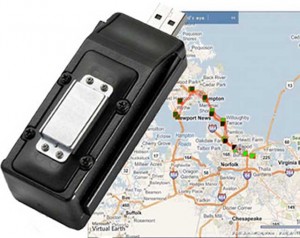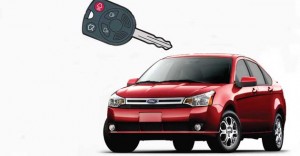
Spy device tracks everywhere driven, then makes that information available for instant download.
One of the more intriguing scenes in “Chinatown” has Jack Nicolson’s character using a couple of cheap dime store watches to discover how long one of the few decent characters in the convoluted drama, set in the Los Angeles of the 1930s, might have spent brooding on the beach. The answer was all night and the method to prove it was simple, as the target of surveillance inadvertently rolled over the watches when he drove away.
Technology is way more advanced, today, so anyone from anxious parents, to suspicious spouses and curious insurance companies have more sophisticated ways like to learn the specifics of a vehicle’s recent history.
For example, gadget maker Hammacher Schlemmer is offering a device that provides the kind of information long prized by snoops of all kinds. Moreover, in keeping with the spirit of the times, it can be done rather economically.
Extending its 161-year history of offering “the best, the only, and the unexpected,” Hammacher Schlemmer has introduced the “Driving Activity Reporter,” a covert device that attaches to a vehicle and records a detailed report of places, routes, and speeds traveled.
“The Driving Activity Reporter allows parents to monitor where a young driver has taken the car and his or her driving habits,” explained Hammacher Schlemmer’s General Manager Fred Berns.
Berns said the device is about the size of the pack of gum and is equipped with a neodymium magnet, clearing the way for “clandestine storage in a glove compartment, underneath a seat or against any metal surface on the interior or exterior of the automobile.” Of course, anyone who has ever watched a movie about spies or read a thriller knows such devices are usually attached underneath the rear bumper or perhaps a wheel well. In a motoring culture where inattention is standard practice, they are virtually undetectable.
“The Driving Activity Reporter’s integrated 16 channel GPS receiver collects transmissions from 24 Department of Defense satellites to track the movements of the car in which it is hidden,” Berns added.
Is this a great country, or what?

Ford's MyKey won't track driving -- yet -- but it will let you limit behavior, such as a teen driver's speed.
The device has a built-in flash memory that holds up to 100 hours of driving activity and, once removed from the car, it plugs into your computer’s USB port and downloads the collected data. Included software uses animated digital street mapping, graphs, and text to show you the date, time, and location of every stop, the duration of each sojourn, and how long it took to reach the destinations.
The data can also be examined using Google Earth. The virtual maps use color-coded lines to trace the automobile’s route, display the maximum speeds reached during the excursion, and show how long the car traveled above the speed limit, allowing anyone to determine if some is speeding and “if the driver’s story is consistent with the car’s actual journey,” according to Hammacher Schlemmer.
Much of this kind of data is already stored on automobiles but is difficult to obtain legally without a court order since the automakers actually do try to safeguard their customers’ privacy. The Hammacher Schlemmer devices, however, provides a quick way around the legal thicket, though any evidence collected may not be usable in court.
However, I doubt those sort technicalities will deter many potential users.
The Driving Activity Reporter has a water-resistant frame and can be used in temperatures between -15 degrees F and 185 degrees Fahrenheit. It enters a “sleep” mode when the car is stationary for more than two minutes, the included AAA batteries providing up to three weeks of power, and “if the power runs out before you retrieve the device, all data will be stored safely on the integrated memory,” according to Hammacher Schlemmer, which bills itself as “America’s longest running catalog company.”
The device, which is available on line at www.hammacher.com, and at its store on East 57th Street in New York City, is also backed up by the firm’s “Lifetime Guarantee of Complete Satisfaction.”
Spying on motorists could become the next “big thing.” A small, East Coast car rental agency tried, a few years ago, to charge customers a hefty penalty if they exceeded 80 mph, based on a GPS device hidden inside the car. State authorities rejected and fined the company.
In several instances, automakers have been forced, by the courts, to release the data hidden within the so-called black boxes they now build into almost every vehicle. Meanwhile, a recent experiment, in Oregon, tracked the mileage of 100 volunteers – though not their specific routes – to see if it would be more effective to tax motorists on a per-mile basis, rather than raising current gasoline taxes.
Ford, meanwhile, is now offering a system called “My Key” on several of its vehicles. It allows parents to set limits on how the person using a special key can drive, such as the vehicle’s top speed. It doesn’t specifically track driving information, but combined with the built-in black boxes, it wouldn’t require much of an effort to add that feature, as well.
